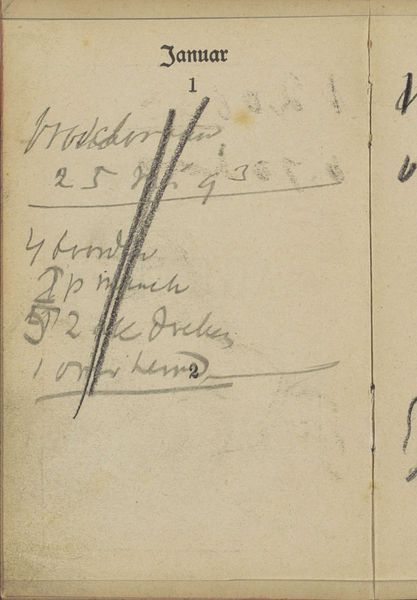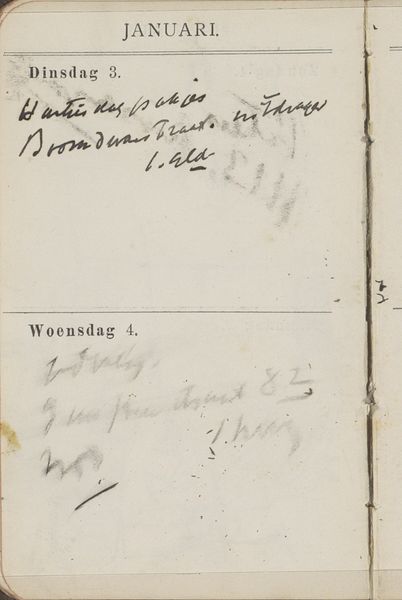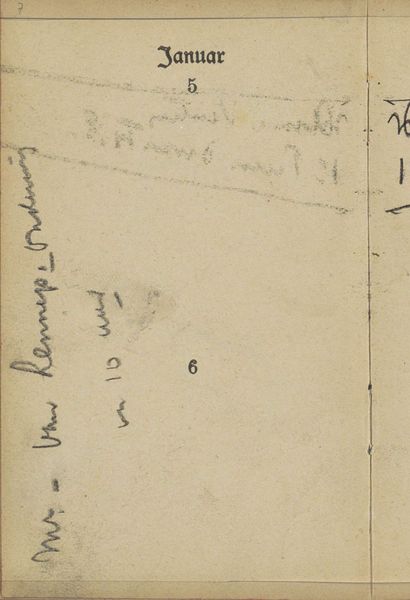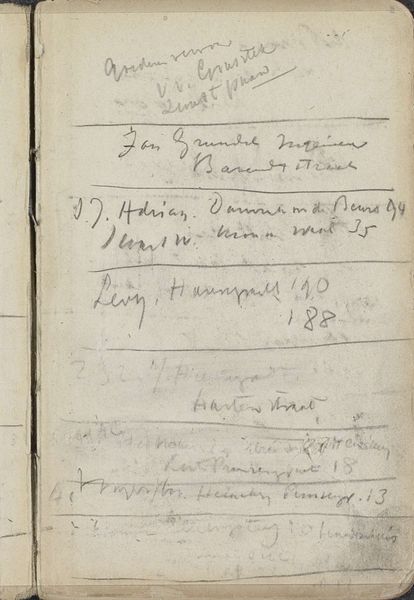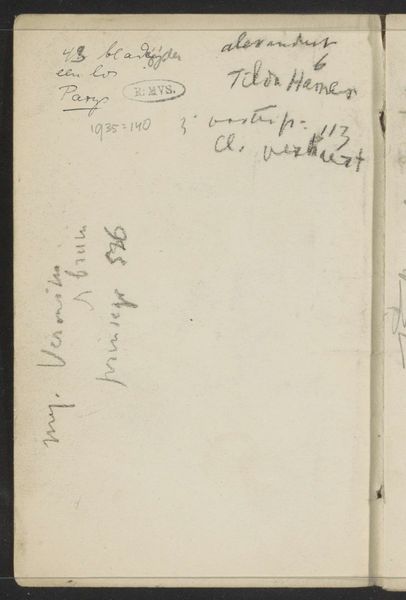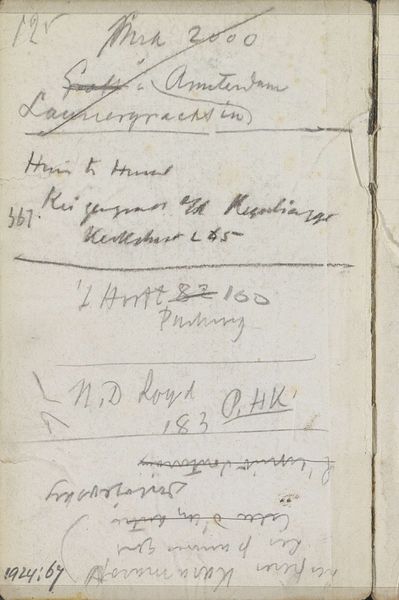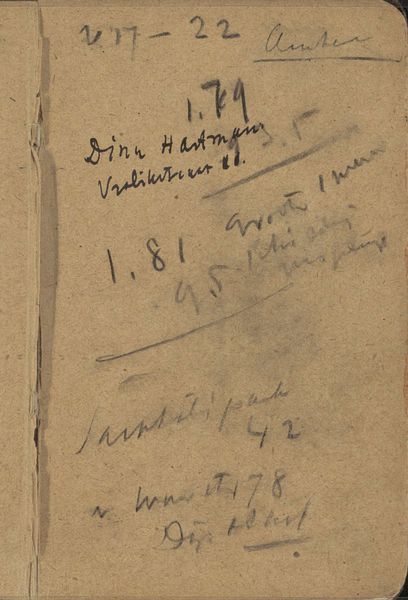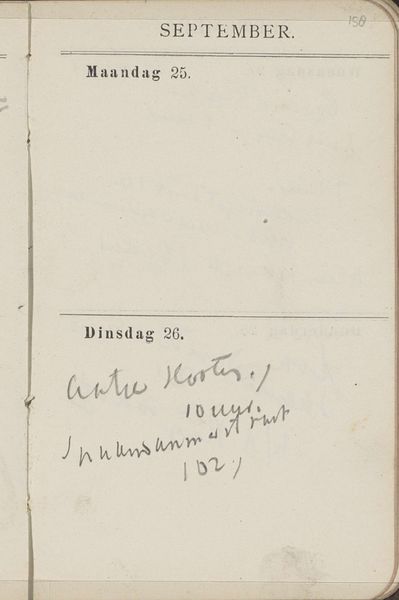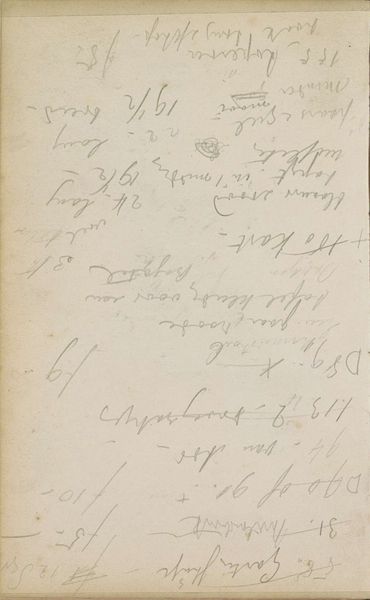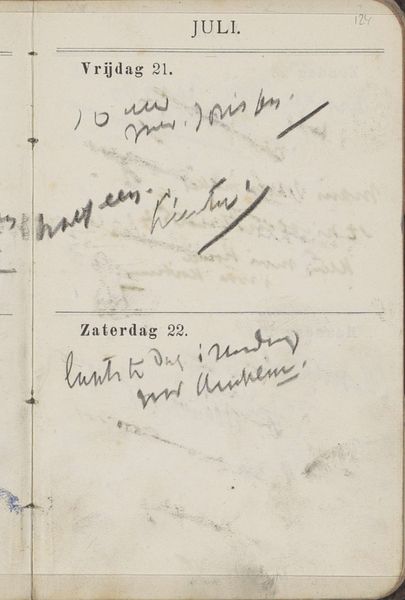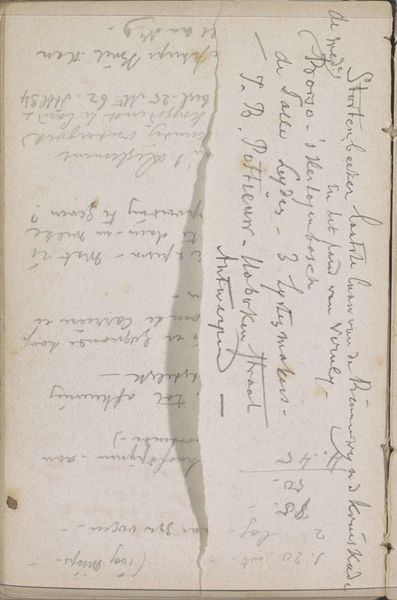
Copyright: Rijks Museum: Open Domain
Editor: This is "Annotaties" by George Hendrik Breitner, created in 1893. It's a miniature drawing made with pen on paper. I'm struck by how informal it seems, like a page ripped straight from the artist's diary. What do you see in it? Curator: I see a fascinating interplay of line and form. Notice how Breitner employs a sparse, almost skeletal approach to the mark-making. The annotations are presented with a seemingly unrefined technique. Editor: Unrefined? Curator: Yes, and the choice of miniature format encourages an intimacy, compelling a viewer to observe with heightened concentration the basic materiality and function of drawing.. Note that the paper is presented nearly "as is" to us. Do you observe an element of incompleteness about the execution? Editor: I think so. It does feel very immediate, like a fleeting thought captured in ink. Almost like... the ghost of a drawing. But why not develop the image into a fully finished landscape drawing? Curator: Precisely. Breitner emphasizes process over product. Instead of pursuing an idealized rendition of form, he offers the unedited evidence of its becoming, the semiotic reality behind representation. The annotations underscore the intentionality of form becoming idea, of inscription on page made deliberately visible. Editor: That makes so much sense! I never considered how much could be communicated simply through the bare essentials of the drawing itself. Curator: Indeed. We can reflect on how Breitner offers new perspective into line, form and semiotics when drawing is considered an unrefined aesthetic process in itself.
Comments
No comments
Be the first to comment and join the conversation on the ultimate creative platform.
